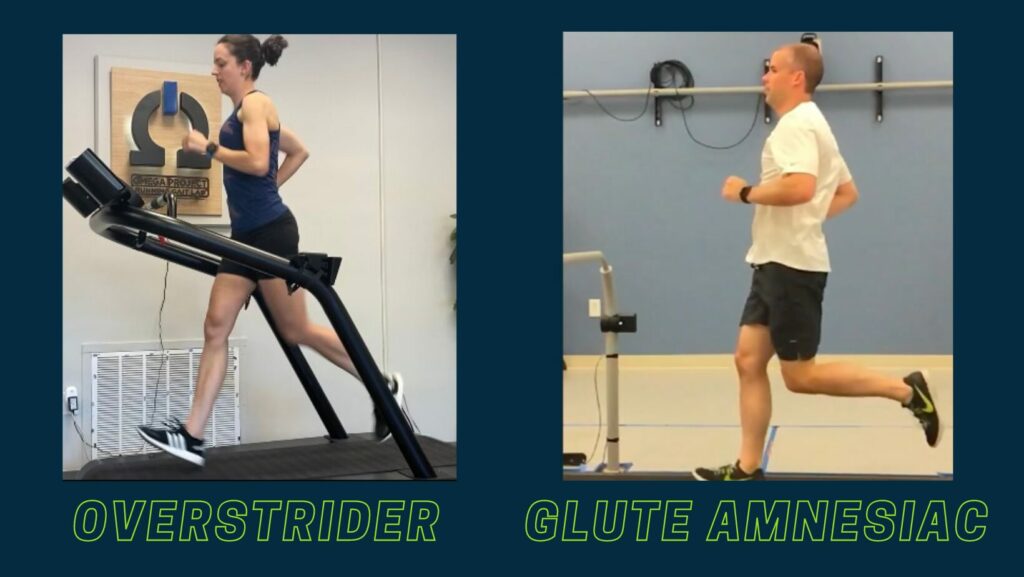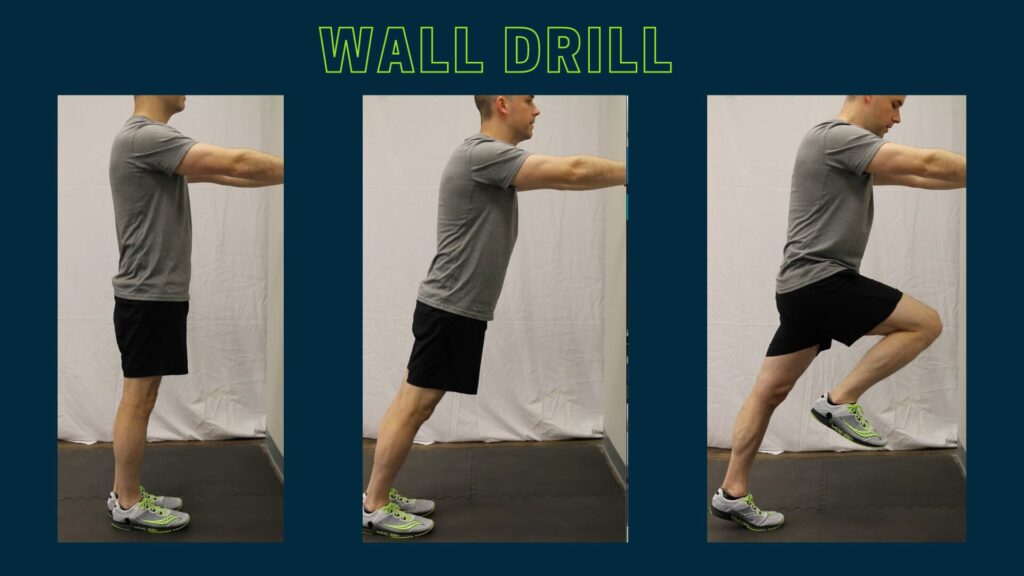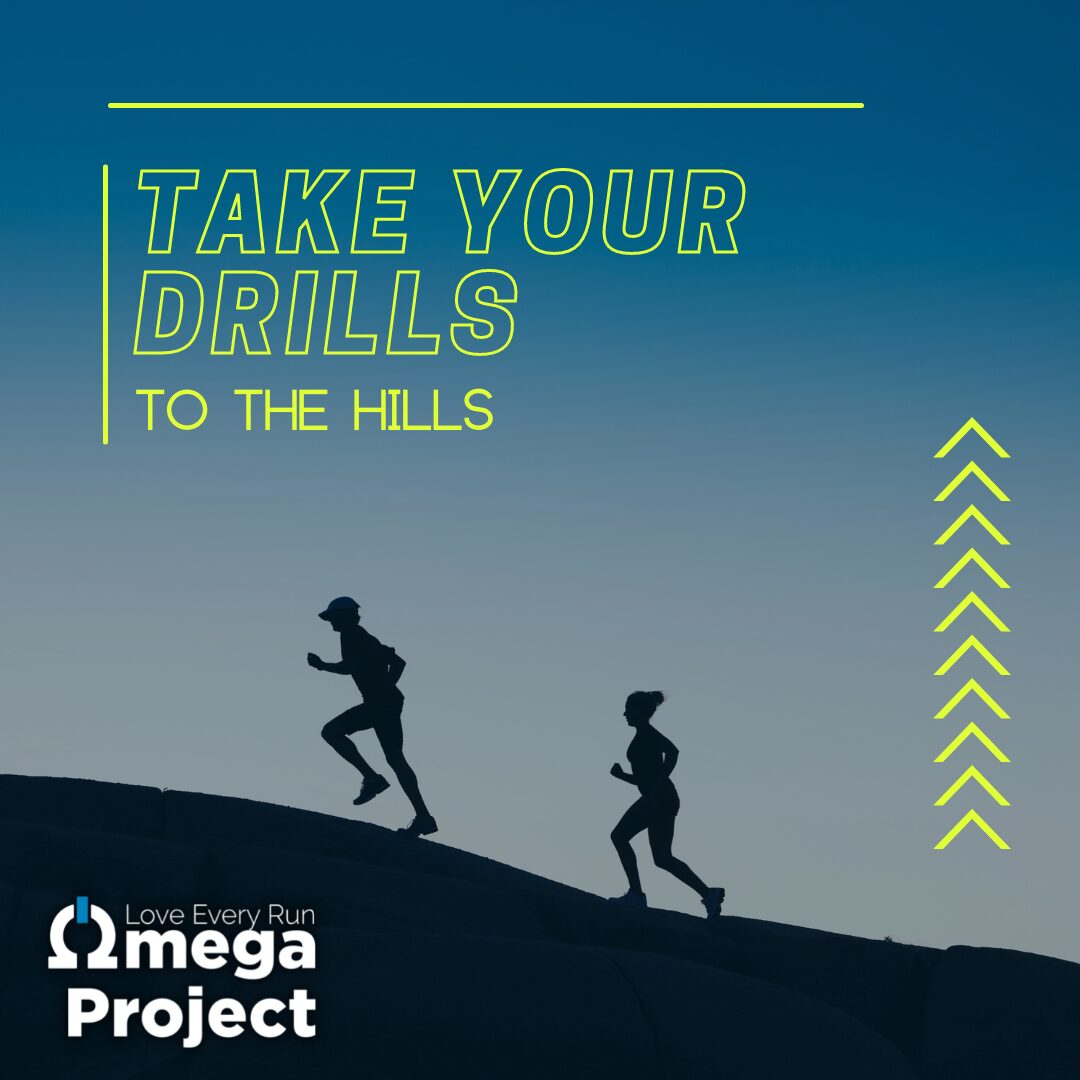Two of the most common gait deficits we see with runners are overstriding (landing with the foot too far out in front of the body) and glute amnesia (running very upright AKA taking your butt for a run).

For the overstrider, we often focus on knee drive (kneeing a soccer ball across a field) as a cue to get people to land closer to their body when they run. We also start to incorporate knee drive drills such as Marching (as we discussed a few weeks ago in our post about our Favorite Running Drills) into the overstrider program. See below for a quick refresher on how to perform the marching drill.
For the glute amnesiac, we often focus on improving forward lean by providing cues for someone to “run into the wind” or perform resisted running. We also prescribe the wall drill for these runners, with the primary focus on getting the appropriate forward lean and doing so from the ankles rather than from the hips. See below for pictures on proper form with the wall drill.

One great way that runners can then take the marching drill and wall drill into real-time practice is to start incorporating hill repeats into their training. The emphasis with hill repeats is on proper form. A great time to start incorporating hills into your training is during base training, when you are running a lot of slower miles. Plan to end the run in an area of a steeper hill and do 4-6 reps of 50 meter hill repeats (roughly a distance that is about ½ of the straight away on a track). Give yourself a full recovery between each hill repeat.
While not a full out sprint, you want to push the pace and really focus on driving your knees straight forward (as though you are kneeing a soccer ball) just like when you do the marching drill. Lean into the hill from your ankles NOT from your hips.
If you come up to a hill during a race or a training run, we also recommend trying to stay relaxed and focusing on your knee drive. You can save a lot of energy while running up the hill more efficiently and prepare yourself better to continue running once you have reached the end of the hill.
Pro Tip #1: During hill repeat workouts, maintain the effort for about 20 meters into the flat at the top of the hill. This will help to give you the confidence during a race that you can finish out the hill and take off at the top!
Pro Tip #2: For those who are just returning from an injury and are getting ready to resume running, starting with uphill WALKING (on a treadmill or outside) is a great way to challenge your cardiovascular endurance, while also practicing proper form before returning to actual running. We often recommend uphill walking at a brisk pace for 1-2 weeks prior to return to running.
If you have any further questions about how to incorporate hills into your running training, Omega Project PT is always available as your local running resource!

